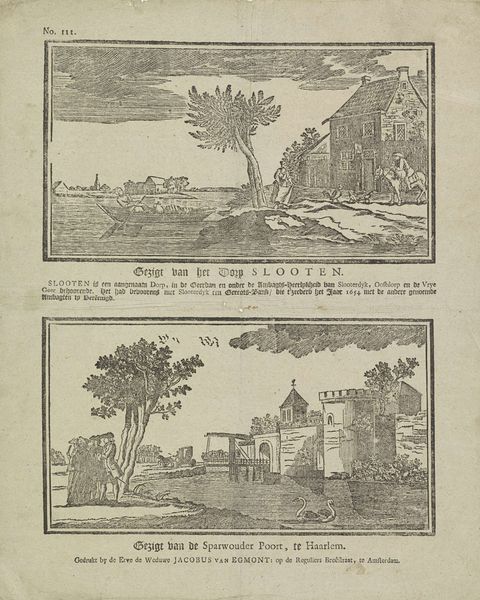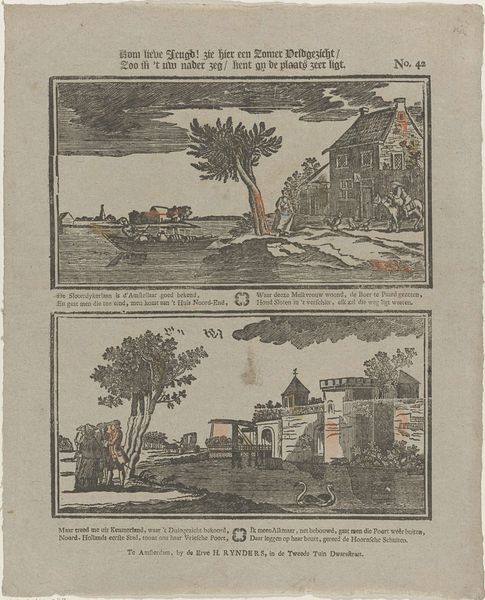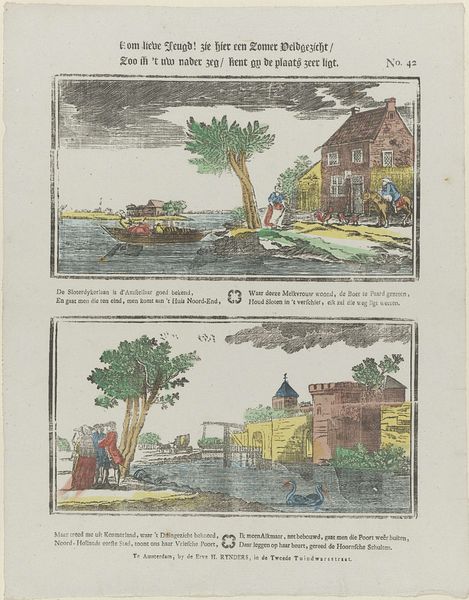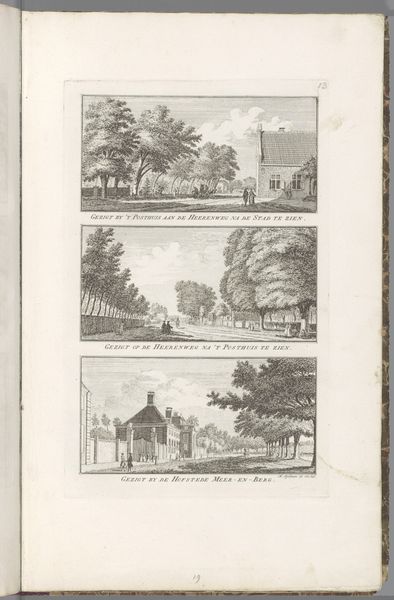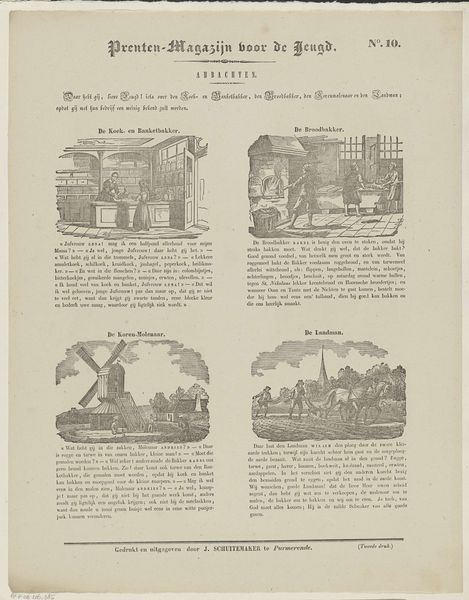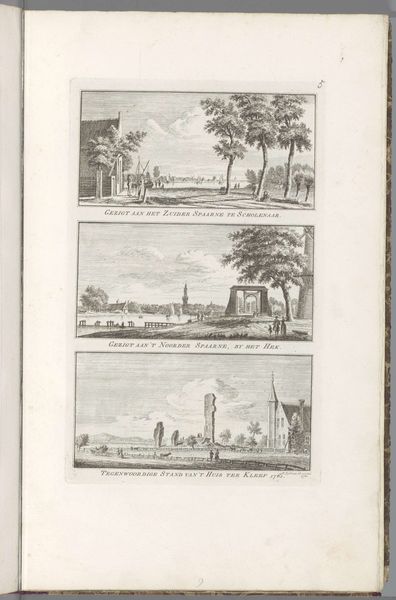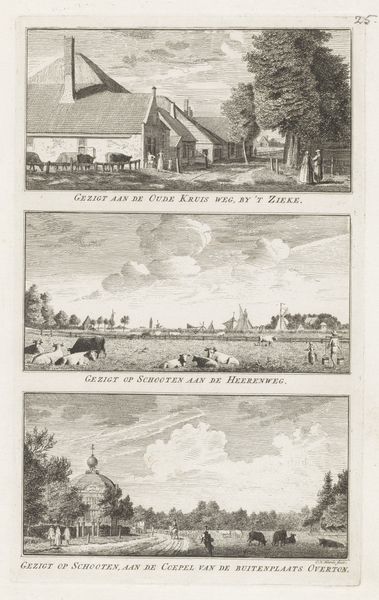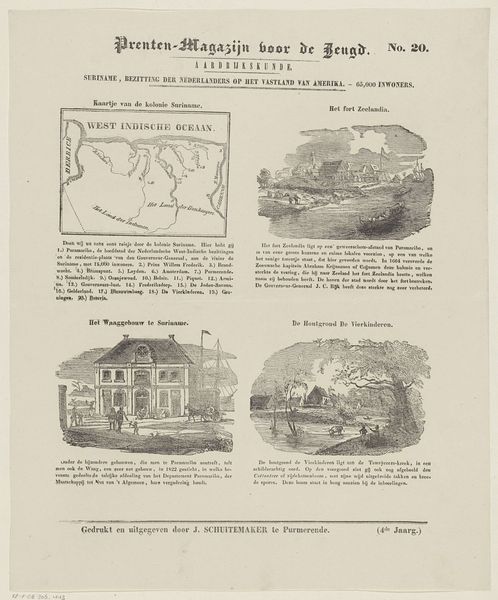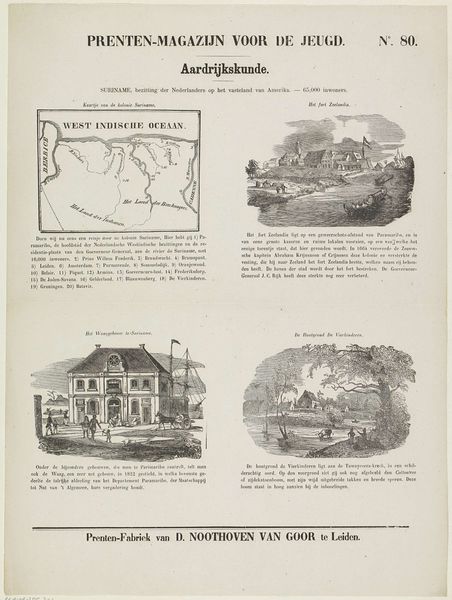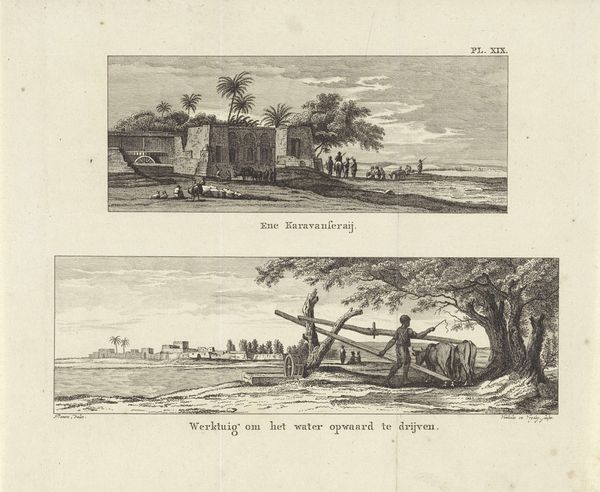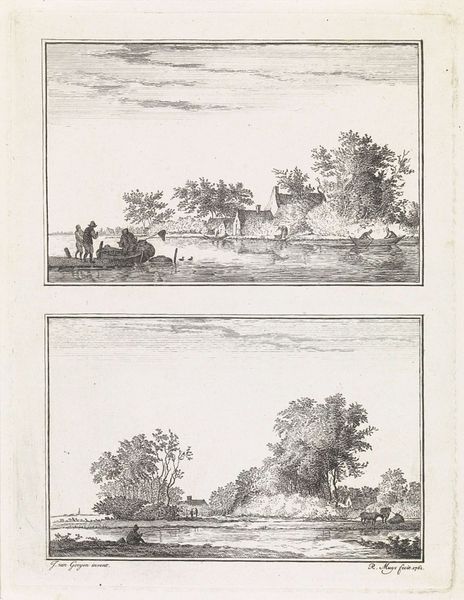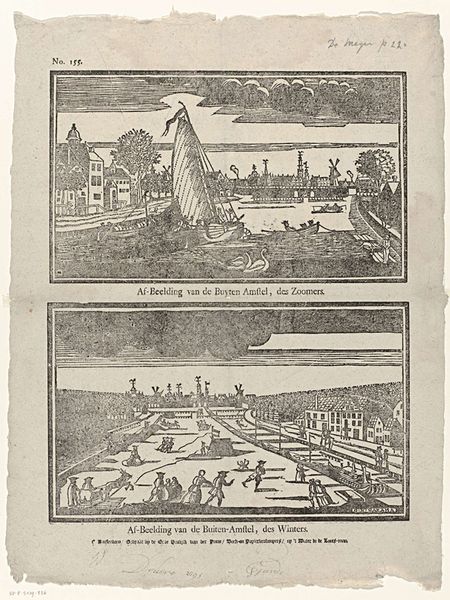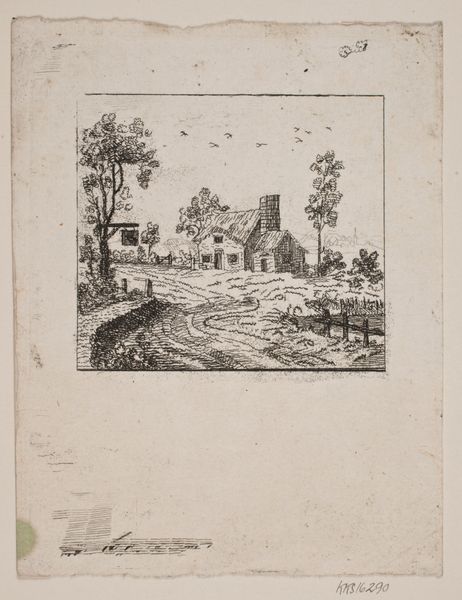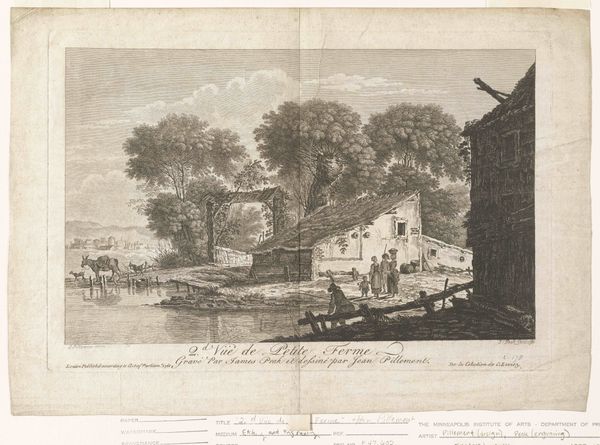
Gezigt van het dorp Slooten / Gezigt van de Sparwouder Poort, te Haarlem 1761 - 1804
0:00
0:00
print, engraving
#
dutch-golden-age
# print
#
landscape
#
cityscape
#
engraving
Dimensions: height 409 mm, width 314 mm
Copyright: Rijks Museum: Open Domain
Curator: What a charming glimpse into the Dutch countryside. This print, entitled "Gezigt van het dorp Slooten / Gezigt van de Sparwouder Poort, te Haarlem," captures two distinct views. It was produced sometime between 1761 and 1804. Editor: My first impression is how it evokes a sense of quietude. The scenes are rendered in a detailed, almost documentary style, yet there's a peaceful quality to the images. It feels like a world observed from a gentle distance. Curator: Indeed. It speaks to the Dutch Golden Age tradition of landscape art, even though this was produced later. You see the Dutch Republic finding its identity in its towns, waterways, and land. These were emblems of a new, industrious national identity, replicated widely as affordable prints. The views immortalize the essence of these locales. Editor: Yes, I see that interplay between image and cultural memory. The villages aren't just places, but representations of Dutch identity at a particular point in history. Sparwouder Poort would have had associations of civic defense and history with that building in Haarlem being one of its primary points of entry. Do you feel the work uses these symbols deliberately? Curator: Undoubtedly. The Sparwouder Poort, in particular, holds civic weight. By presenting the Slooten and the gate together, they echo national pride as this image went out to public audiences. You are reminded of a place where trade, agriculture, and community intertwine. Editor: There's a deliberate composition here that lends itself to a very human understanding of landscape. It’s a controlled vision, carefully balanced between accuracy and perhaps, a bit of idealization? Even the livestock seems strategically placed. Curator: Absolutely. And though presented simply as an engraving, such images fueled a booming market of landscape and city prints during the time, speaking volumes about the values and self-image the Dutch were keen to promote, which had ramifications for the national project of solidifying their society. Editor: It's fascinating how this seemingly simple print holds so much layered cultural and political meaning within its etched lines. Curator: Indeed. It serves as a powerful reminder of how art not only reflects but also actively shapes perceptions of place and belonging.
Comments
No comments
Be the first to comment and join the conversation on the ultimate creative platform.
